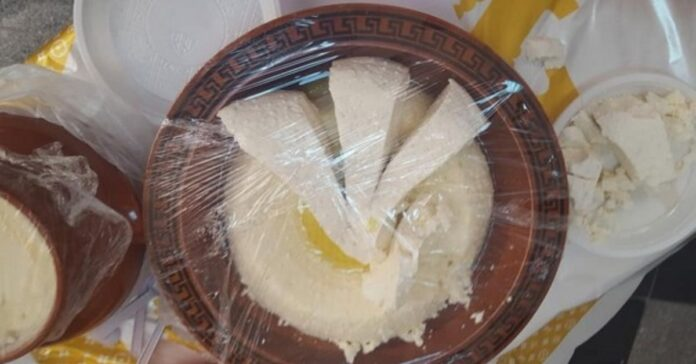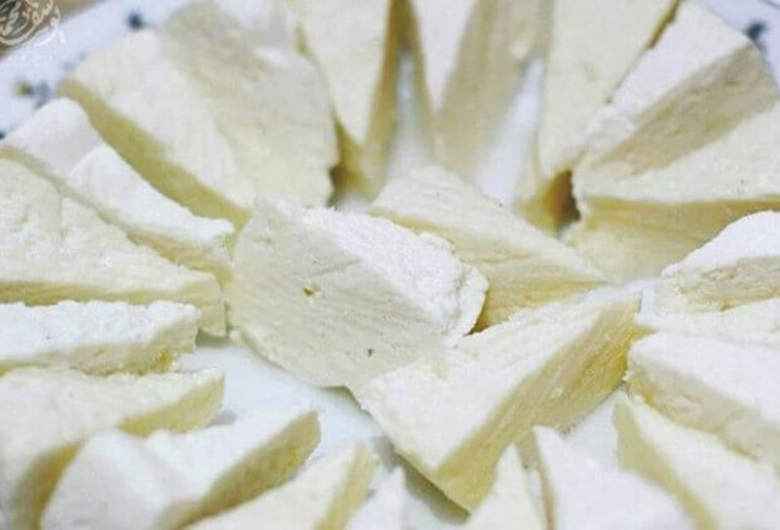? Do you know the varieties of local cheese in Algeria
Cheese from the Old French “cheese” from the Latin “formaticus” i.e. makes a shape. my first occurrence of the use of cheese as food is unknown, ethnologists hold proof that man has known for a long time, by the phenomenon of coagulation of milk since the discovery on the shores of Lake Neuchâtel (in Switzerland) of curd molds dating from 5000 BC.
Algeria has a very interesting cultural heritage in the field of traditional cheeses, even if the activity is limited to the domestic sphere. Despite their strong roots in the culinary tradition, these products have to date never been taken into serious consideration by the public authorities with a view to developing them, particularly in the pastoral regions of the country.
These regional cheeses with strong cultural power can be the subject of new discoveries of aromas and varied natural tastes likely to be of great interest to consumers in the region and around the world.
The J'ben
The J'ben
One of the most popular cheeses in northern Algeria is J'ben (Djben). This cheese is obtained by maceration at 30 – 35°C for half an hour of certain plants (cardoon flower: Cynara cardunculus L, artichoke flower: Cynara scalymus, fig tree latex: Ficus carica, and pumpkin seeds ) in milk (cow, sheep or goat) to ensure coagulation.
Draining is then done in cheesecloth for 2 to 3 days depending on the season. Coagulation can also be used commercially not by aspartic protease but by rennet. The coagulum obtained from the draining represents the J'ben. Milk (cow, sheep and goat) can also be left alone at room temperature for 18 to 24 hours.
The Rayeb
The Rayeb
The Rayeb obtained can then be skimmed and churned in goat or sheep skin (called CHEKOUA). The butter obtained called SEMNAH is removed in a single lump by adding cold water. The remaining whey called L'ben is heated slightly until the whey is separated. The aqueous phase (Whey) is separated in cheesecloth for 10 to 15 hours and the coagulum obtained represents the J'ben cheese known in other Arab countries under the name of Jibneh Beida.
This cheese can be eaten as it is, salted or added with some spices or aromatic plants. Sometimes, during storage after 2 to 3 days, L'ben can deteriorate by developing a strong lactic acidity. To avoid its loss, the product is moderately heated for 15 minutes until the whey is separated. The coagulum recovered after filtration in a muslin is a fresh cheese called in certain regions of the country 'KLILA'. The draining of this type of cheese can be accelerated by pressing with a stone which can improve its shelf life.
The Bouhezza
Bouhezza cheese from Oum El Bouaghi: know-how in the Aurès
Bouhezza (or Malh Dh'ouab or Bou mellal) is another traditional cheese whose manufacturing practice extends from the Aurès region in Batna to the Tunisian borders in Tébessa. Originally this cheese was the product of the transformation of goat's and sheep's milk. Cow's milk is currently the most widely used due to its availability. The salting, draining and refining of 'Bouhezza' are carried out simultaneously for 2 to 3 months in a 'Chekoua' skin of goat or kid (which seems to drain better) previously treated with salt, juniper and other products (tannins, rosemary, semolina, barley, etc.). The preparation of the cheese is done by an initial quantity of spontaneously fermented, churned and skimmed milk designated by the L'ben.
This quantity is supplemented throughout the manufacturing period by repeated additions of slightly acidic skimmed L'ben. The quantity of salt added in the raw material or directly in the cheese paste varies from one family to another (20 to 125g/l). Once made, the cheese is kneaded with crushed hot red pepper which gives it a characteristic taste. The cheese is stored at the end in the Chekoua or in glass or plastic containers.
The Takammert
The Takammert
Takammert, is a cheese from Hoggar , its manufacture by the Tuaregs is done by introducing a piece of curd of young goats into the milk. After a few hours the curd is removed using a ladle and placed in small heaps on a mat made of fennel stalk which gives it a particular aroma. It will then be kneaded to evacuate as much serum as possible, and placed again on the mats to be dried in the sun for 2 days then placed in amber until the cheese hardens.
Takamarit
Takamarit is usually eaten on festive occasions and religious holidays
Takamarit (Kemariya in Darja) is a traditional cheese made from goat's milk made by women in southern Algeria, particularly in the wilayas of Ghardaïa and Naâma . It is coagulated by plant enzymes and also made from cow and camel milk. It is an unsalted white cheese with a soft texture. This festive cheese is often served with tea; but never with bread.
Aghoughlou
Aghoughlou
In Kabylie, a cheese called Aghoughlou is finally found, the coagulation of raw cow's milk is ensured by the sap of the Fig tree.
Ighounan
Ighounan
Ighounane is a cheese made in Kabylie from colostrum or cow's milk. Its preparation is carried out in a terracotta utensil coated with olive oil in which a small quantity of salted water is poured and then the milk which will be heated is coagulated. The curd formed will be cut and ready to be eaten.
The Klila
The Klila
Klila is the most popular traditional cheese in Algeria. To make it, Lben is gently heated over low heat until it coagulates, then a very fine cloth is used to drain it and remove the water to obtain a kind of paste "the klila" which is left to dry in the sun to harden it.
Klila can be eaten with dates , or a date-based dish like Rfiss. It can accompany certain dishes such as Aich, couscous and Harira. The way to eat Klila is to dip it in water or milk to soften it like in the picture.
Alongside the previous products, there are local preparations limited to certain regions of the country, such as Tbakhbakhene cheese, originating from the Aurès region. It is produced from a mixture of barley Frik (Marmaz) and L'ben subjected to fermentation at 20°C by immersion in a well for 2 to 5 days.
The promotion of these products in our country remains dependent on the financial support, technical support and research and development that agricultural policies must put in place in order to develop extensive livestock farming in Algeria on the one hand and on the other the installation of small industrialists in rural areas in particular.
Moreover, a more in-depth knowledge of the characteristics (microbiological, nutritional and dietary) as well as of the technological manufacturing processes is more than necessary for the labeling and promotion on an industrial scale of some of these local cheeses.
Source:
Local cheeses in Algeria (Ait Saada, Djamal; Selselet-Attou, Ghalem) – 2014
https://topdestinationsalgerie.com/connaissez-vous-les-varietes-de-fromage-de-terroir-en-algerie/










